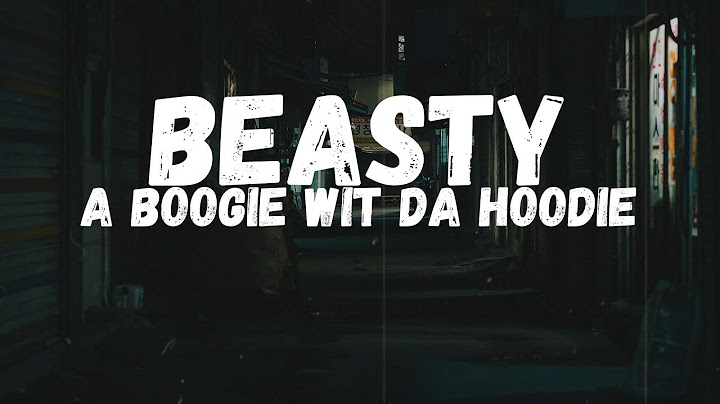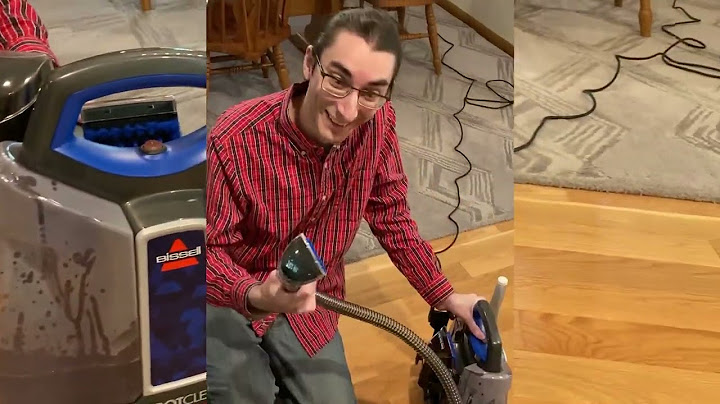The book opens on the narrator at a dinner party of well-educated, upper-class professionals and specialists, including his friend, an eminent scientist whom he calls the Time Traveller. The Time Traveller is describing to his guests principles of science and math, including the notion that time (or “duration”) is a traversable dimension just like length or width. This builds up to an explanation of how time travel might be possible. The assembled guests react with skepticism and excitement, finally demanding that the Time Traveller prove to them that he has actually created a mechanism for traveling in time. Show The opening introduces scientific and mathematical concepts that don’t themselves add up to explaining how time travel is possible, but are meant to give readers a taste of the complexity of the concept. By highlighting the intellect and ambition of the Time Traveller, Wells is deliberately setting up a contrast to the humanlike species of the future who have degenerated almost past recognition. It’s important to note, too, the social class of the assembled guests. The Time Traveller, an important scientist, is wealthy, successful, and well-educated, and so are his guests. This implicates the Time Traveller in the class-related violence that the book will soon explore.
The Time Traveller goes to his laboratory and returns with a small model of a machine made of metal and ivory. The group of dinner guests examines it to be sure it’s not a trick, and the Time Traveller points out that one of the bars is glimmering as though it is only partially there. The Time Traveller points to a lever and says that when he presses it the machine will disappear into the future. A skeptical guest insists that he depress the lever himself, and when he does, the machine disappears. The only person not stunned is the Time Traveller. Here, Wells imagines a scenario that could begin to overcome an educated person’s doubts about time travel. This underscores that the Time Traveller’s guests are educated and skeptical, but it also is a rhetorical device to allow the reader to suspend his or her own disbelief. In addition, the notion of testing a model time machine in public resonates with the Time Traveller’s consistent commitment to the scientific process. He is always testing his ideas and then readjusting them to fit what happens, just like the scientific method. The Time Traveller then reveals that he has nearly finished building a life-size version of the model in his laboratory, and that it will allow him to make his own voyage in time. He leads the still-skeptical guests to his laboratory, where they observe a larger version of the machine that just disappeared. Despite the machine parts, blueprints, and the spectacle they have just witnessed, the guests still seem not to believe the Time Traveller, who swears that he has never been more serious about anything in his life. Even though a reader is not likely to believe in the possibility of time travel, Wells’ choice to have the dinner guests remain skeptical of the endeavor encourages readers to be on the Time Traveller’s side, which is essential to their emotional investment in the book. It’s also notable that the Time Traveller seems unconcerned that his guests don’t believe him. As a scientist, he is not interested in convincing people—he wants to show them proof, which he’s confident he can do soon. The Time Machine is a work of science-fiction that imagines how the social conditions of Victorian England have evolved in the year 802,701. The story opens on a dinner party at the home of an eminent scientist, the Time Traveller, who is explaining to his assembled guests (including the narrator telling the story) principles of science and math that support the possibility of traveling across time, just as one would travel across space. His guests are upper class British men—a doctor, a psychologist, a journalist, etc.—and they greet his pronouncements with skepticism. To demonstrate the validity of his ideas, the Time Traveller brings into the living room a small model of a machine. The psychologist, ever skeptical, depresses a lever and the machine disappears. The Time Traveller then reveals that he has almost completed a life-sized machine that will transport him through time. He shows the machine to the guests, but they remain skeptical. At dinner the following week, the Time Traveller is not there to greet his guests. He has left a note instructing them to proceed with dinner if he is late, and partway through their dinner the Time Traveller staggers into the house looking disheveled and injured. Once the Time Traveller has washed up, he agrees to tell his story in full on the condition that nobody argues with him or asks questions, since he is terribly exhausted. The Time Traveller says that the previous week he finished his machine and took a voyage into the future. He arrived in the year 802,701 on the spot where his laboratory once stood—it had become a garden of strange flowers beside a large white Sphinx statue. He saw small humanlike beings (whom Wells later reveals are called the Eloi), and they seemed feeble and much less intelligent than he hoped the people of the future would be. The Time Traveller continues his tale: the beings are friendly to him, and he begins to explore the landscape for clues to what has happened. There seems to be no adversity, fear, or labor in this world, and the Time Traveller hypothesizes that this is a communist utopia of the future, in which all social problems have been solved. He believes that this explains the weakness and stupidity of the beings—there is no need for force or intelligence in a world of peace and plenty. The Time Traveller is briefly delighted, but, despite thinking that all problems are solved, he still feels disappointed that future humans are not smarter or more curious. When the Time Traveller returns to the garden where he landed he realizes that his time machine is gone. He briefly goes into a rage-fueled panic, and then decides that the rational course of action is to study this new world, learn its ways, and let this knowledge lead him back to the time machine. Seeing grooves in the grass leads him to believe that the machine has been hidden behind a metal panel in the pedestal of the Sphinx statue, but it won’t give when he tries to open it. The Time Traveller begins learning the language of the Eloi (which is very simple) and he explores the landscape, noticing a strange network of dry wells and towers, which suggests a large underground ventilation system. He also notices that the Eloi never seem to do any work, but their sandals look new and their clothes are not frayed. This observation, combined with his having felt something touching him at night and having caught a glimpse of a strange white animal, leads him to determine that his original utopian explanation is inadequate. Later that day he rescues a drowning Eloi. Her name is Weena, and she begins giving him flowers and following him everywhere to express her gratitude. Weena’s agony whenever he leaves her and her fear of the dark make the Time Traveller realize that the Eloi are not without fear and danger. One morning while seeking shelter from the heat he sees a white ape dash down the shaft of one of the wells he had previously observed. The Time Traveller concludes, feeling disgusted, that the Eloi are not the only species that have evolved from humans of his day: the Morlocks, as the ape beings are called, are human descendants, too. The Time Traveller determines that the Eloi and Morlocks evolved as such because of the entrenched class divisions of Victorian England. The Eloi are the descendants of the British elite, and the Morlocks the descendants of the British poor—the Eloi, the Time Traveller believes, have been exploiting the Morlocks for centuries, and, as a result, have easy lives. Meanwhile, the Morlocks, toiling underground for the Eloi, can no longer bear to be in the light—their eyes have evolved in a way that light pains them. Knowing that knowledge of the Morlocks might lead him to his time machine, the Time Traveller descends into one of the wells where he sees a room full of Morlocks and machines. He sees them eating meat, which tells him they are carnivorous, unlike the Eloi. When several Morlocks attack him, he uses matches to fend them off and barely escapes. He has a sense that the Morlocks are evil. To search for weapons against the Morlocks, the Time Traveller and Weena voyage to a large green building that the Time Traveller had seen in the distance. On the way, Weena puts flowers in the Traveller’s pocket, as a kind gesture. He realizes while walking that the Morlocks are cannibals—they eat the Eloi—and this is the source of Weena’s great fear. The trip takes two days, but the green building turns out to be an abandoned museum, and inside it he finds a preserved box of matches and an iron bar he can use as a weapon. He and Weena head back for the garden with the goal of retrieving the time machine from the Sphinx statue. The Time Traveller knows he will have to stop somewhere for the night, so he gathers kindling as they walk in order to start a fire that will keep them safe from Morlocks. Walking through a thick wood, the Time Traveller feels the Morlocks grabbing at him, so he puts his kindling down and sets it ablaze to protect them as they walk on. Outside the sphere of light, though, the Morlocks return and Weena faints. The Time Traveller starts a fire and falls asleep. When he wakes up the fire is out, Weena is gone, and the Morlocks are attacking him. He fends them off with the iron bar and then realizes that his previous fire had started a forest fire, and the Morlocks are fleeing the blaze rushing towards him. The Time Traveller runs, too—he escapes, but Weena dies, and his matchbox disappears. He only has a few loose matches in his pocket as tools to get his time machine back. Back at the Sphinx, the Time Traveller sleeps. When he awakens, the panels on the pedestal are open and he sees his time machine in plain sight. He casts aside his iron bar and enters the Sphinx, but as soon as he does the panels close and he is left in darkness with the Morlocks. Moreover, his matches don’t work because they are the kind that must be struck on the box. He fights them off enough to get on his time machine and pull the lever, barely escaping into the future. The Time Traveller finds himself thousands more years in the future on a desolate beach where menacing giant crabs roam. He moves farther into the future to escape them, noticing the sun getting larger, the earth getting colder, and the air getting thinner. As signs of life wane, the Time Traveller gets scared and decides to return home. He pulls the lever and travels back to his dinner guests, disheveled and injured from his adventures. While his guests remain skeptical of his adventures—his only evidence is that his time machine is dirty and dented and he has the strange flowers from Weena in his pocket—the narrator is inclined to believe. The narrator returns the next day and finds the Time Traveller preparing for another voyage. The Time Traveller tells the narrator to wait for him for a half hour, but the narrator says, sadly, that it has been three years and the narrator has not returned. What is the summary of the book The Time Machine?A Victorian-era scientist (played by Rod Taylor) invents a machine that transports him through time. He travels forward to flee the warlike world of 1900. He stops the machine in 1917, in 1940, and in 1966, but he finds the world at war on all three occasions.
What is the main message of time machine?Throughout The Time Machine, Wells shatters several common assumptions of human thought (for example, the belief in the inevitable progress of the species, the notion that technology will make human life better, and the insistence that people are at the center of the universe and will endure forever).
What is the meaning of The Time Machine by H. G. Wells?A work of future history and speculative evolution, Time Machine is interpreted in modern times as a commentary on the increasing inequality and class divisions of Wells' era, which he projects as giving rise to two separate human species: the fair, childlike Eloi, and the savage, simian Morlocks, distant descendants ...
What happened at the end of The Time Machine?It's very open-ended. The Time Traveller disappears and never comes back. We don't know where he went or why. The unnamed narrator makes some guesses to show the range of possibilities: maybe he's with our primitive ancestors or dinosaurs (not at the same time, of course), or maybe he's in the nearer future.
|

Related Posts
Advertising
LATEST NEWS
Advertising
Populer
Advertising
About

Copyright © 2024 moicapnhap Inc.


















